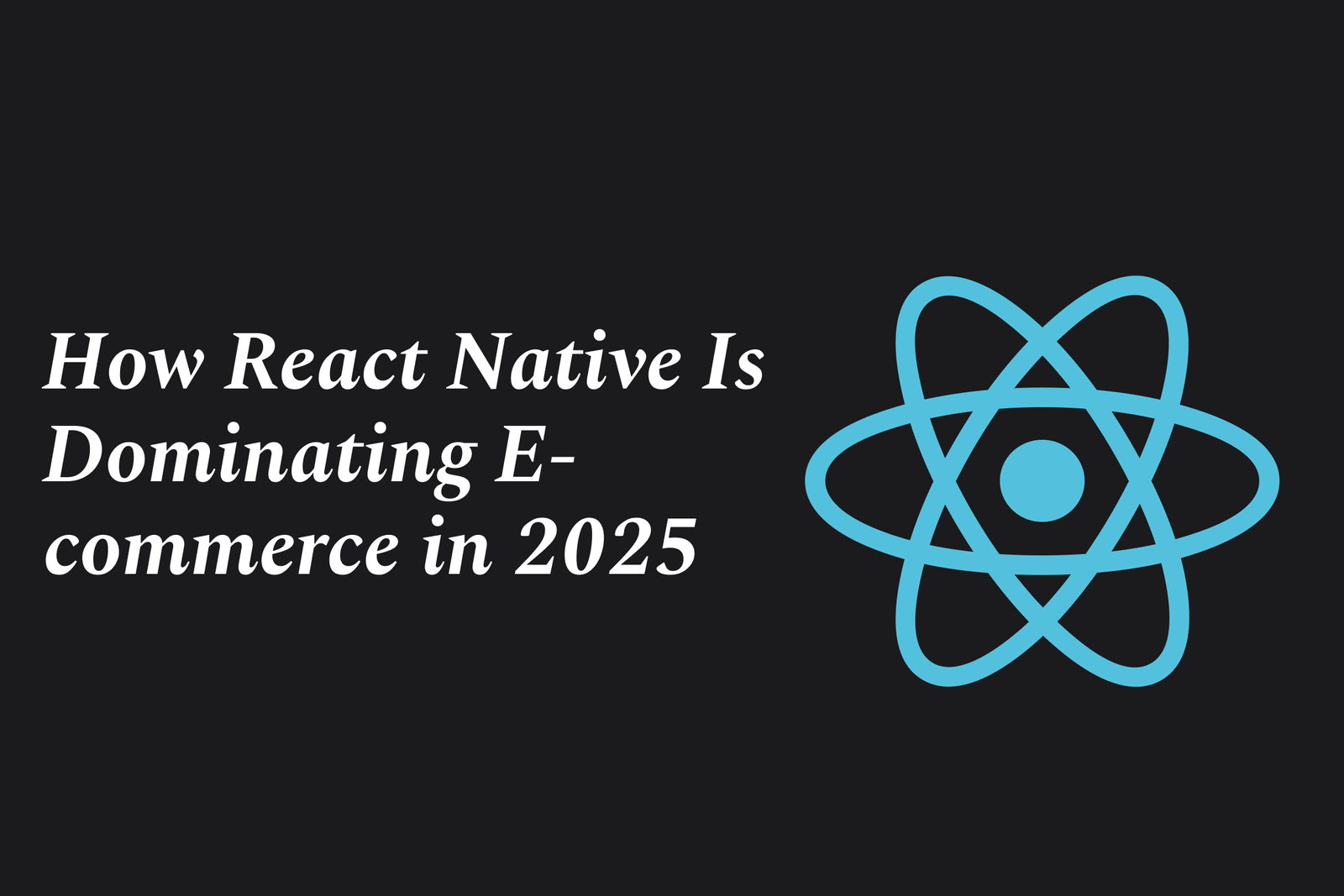How React Native is Dominating E-commerce in 2025
In 2025, React Native dominates e-commerce by enabling fast, cost-effective cross-platform app development with near-native performance. Its vast ecosystem, seamless UI, and quick iteration empower businesses to deliver engaging, scalable shopping experiences across iOS and Android efficiently.
How React Native Is Dominating E commerce in 2025
1 ) The Rise of Cross Platform Development in 2025
Cross platform development frameworks, particularly React Native and Flutter, have become essential in 2025 due to business demands for faster time to market, consistent user experiences across devices, and scalable architectures. These frameworks allow companies to “build once, deploy everywhere,” enabling significant reductions in development time and cost, while maintaining high quality user experiences crucial for competitive e commerce platforms.
2 ) React Native’s Strengths in Mobile App Development
React Native continues to lead in cross platform mobile application development for e commerce by offering near native performance through a single JavaScript/TypeScript codebase. Its integration with a vast JavaScript ecosystem, continuous innovation backed by Meta, and a growing community make it a preferred choice. React Native’s new architecture eliminates previous performance bottlenecks, enabling highly responsive, maintainable, and scalable mobile e commerce apps.
3 ) Cost Effectiveness and Development Efficiency
Using React Native significantly reduces development and maintenance costs for e commerce businesses by unifying development efforts across iOS and Android platforms. With features like hot reloads for real time code updates and reusable components, development cycles shorten, allowing faster iteration and quicker deployment of shopping apps. This cost efficiency directly benefits e commerce businesses seeking rapid growth and agility in dynamic markets.
4 ) Enhanced User Experience and Performance
React Native’s ability to deliver high performance, smooth animations, and consistent UI/UX across mobile platforms enhances customer engagement in e commerce applications. Its component based architecture supports rich, interactive interfaces and seamless integration of third party services, essential for modern e commerce features like personalized shopping, real time inventory updates, and secure payment gateways.
5 ) Strong Market Adoption and Ecosystem Support
Major e commerce companies and platforms have adopted React Native due to its robust community, extensive libraries, and long term support from Meta. It powers apps for global brands, contributing to its dominance in the e commerce sector. The framework also supports integration with AI and cloud services, further enhancing e commerce capabilities such as intelligent recommendations and scalable backend solutions.
6 ) Complementary Use with React JS for Full Stack Development
React Native developers often work in tandem with React JS for web applications, enabling businesses to create unified e commerce experiences across web and mobile. This synergy allows streamlined workflows and consistent branding, improving customer retention and simplifying ongoing updates and feature rollouts.
Summary:
In 2025, React Native dominates the e commerce space by delivering cost effective, high performance, cross platform mobile solutions that meet the evolving demands of businesses for speed, scalability, and quality user experience. Its continuous innovation, strong community, and integration with complementary technologies make it a strategic asset for e commerce companies aiming to thrive in the mobile first digital economy.
https://justacademy.in/news-detail/react-native-vs-nativescript:-which-one?s-winning?
https://justacademy.in/news-detail/android-file-sharing-innovations
https://justacademy.in/news-detail/flutter-adds-ai-toolkit:-what-it-means-for-developers
https://justacademy.in/news-detail/flutter-now-supports-desktop-and-embedded-devices
https://justacademy.in/news-detail/android-app-developer-conference-highlights
Related Posts
Java supports GDPR and data privacy by enabling secure data handling through encryption, controlled access, and precise data management. It allows developers to minimize PII exposure, ensure data confidentiality, and design workflows that comply with data protection regulations effectively.
Java code quality tools have evolved to include advanced static analysis, integrated security checks, and AI-powered code reviews. These updates help developers detect bugs, enforce coding standards, and enhance security, streamlining the development process and improving overall code reliability.
Java remains a cornerstone in big tech companies, evolving with modern features like records, pattern matching, and virtual threads. Its robust ecosystem, enhanced performance, and growing AI integrations keep it vital for both legacy systems and innovative new projects.
Java and CI/CD pipeline optimizations streamline Java application development by automating builds, tests, and deployments. They improve efficiency through parallelization, caching, and secure secrets management, enabling faster feedback loops and more reliable, scalable software delivery.
Java supports modern cryptography standards through its flexible Java Cryptography Architecture (JCA), enabling integration of advanced algorithms like AES, EdDSA, and post-quantum tools. Libraries like Bouncy Castle offer FIPS-certified, hardware-accelerated implementations for secure development.
Java 23 enhances record patterns by enabling concise, direct destructuring of record components within pattern matching, simplifying type checks and data extraction. This improvement boosts code readability and expressiveness by reducing boilerplate in handling immutable data classes.
Java remains a top choice for mobile app backends, powering scalable, secure, and high-performance server-side solutions. Latest trends include cloud-native microservices, reactive programming, and enhanced JVM optimizations, enabling efficient, flexible, and robust mobile backend development.
Java SE 24 and LTS Java SE 21 offer enhanced features and performance, while Apache Spark 4.0.0 introduces Scala 2.13 support and advanced ML and SQL capabilities. Together, they empower developers to build scalable, high-performance data applications with modern tools.
JUnit 5 modernizes Java testing with a modular architecture, improved assertions, and seamless Java 8+ support. Beyond JUnit, tools like Mockito and AssertJ enhance mocking and assertions, creating a powerful, flexible ecosystem for writing clean, efficient Java unit tests.
Java plays a pivotal role in cloud automation tools by providing a robust, platform-independent language used to build scalable automation frameworks like Jenkins and Selenium, enabling efficient CI/CD pipelines, testing, and orchestration across diverse cloud environments.










